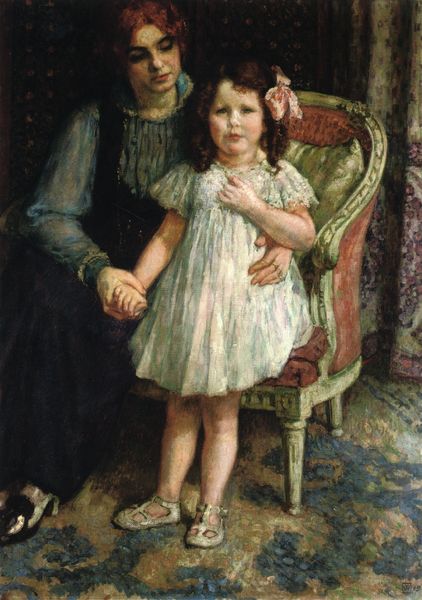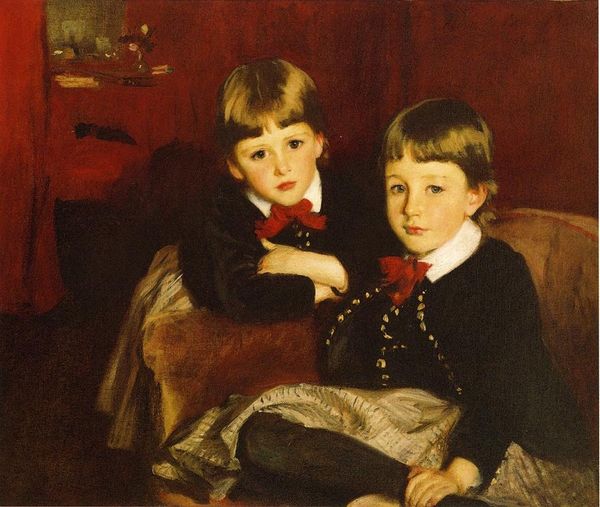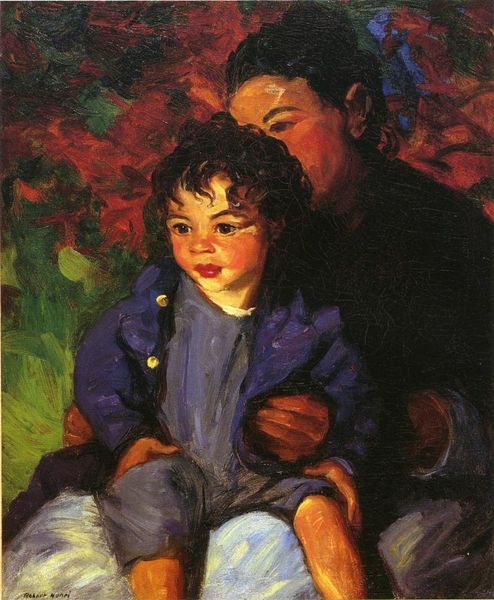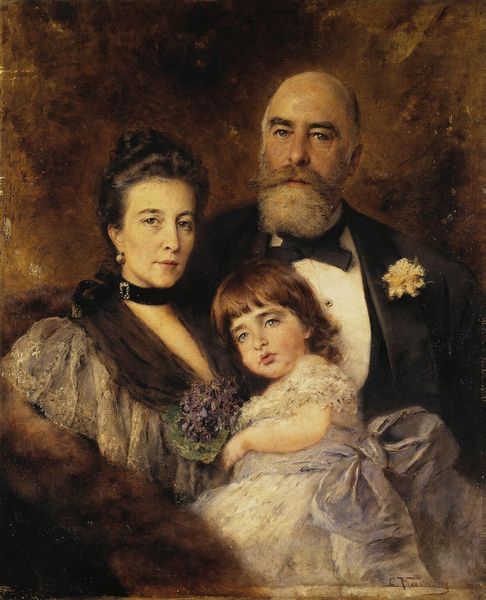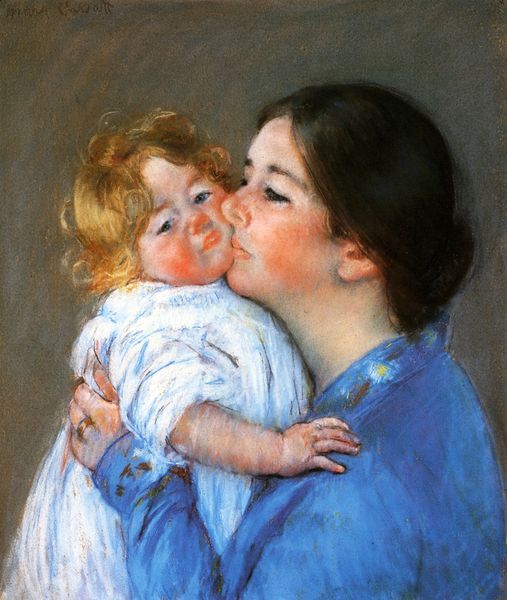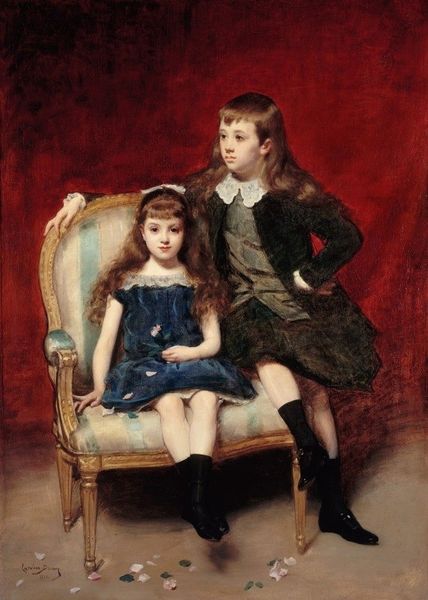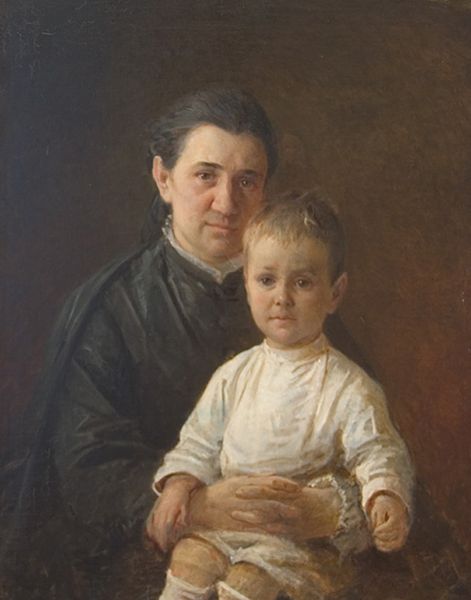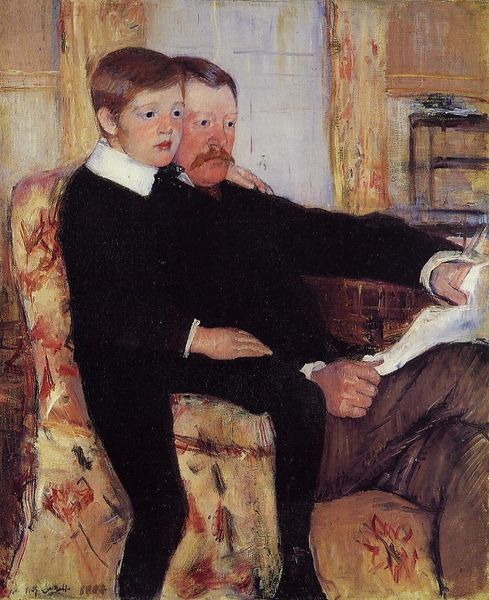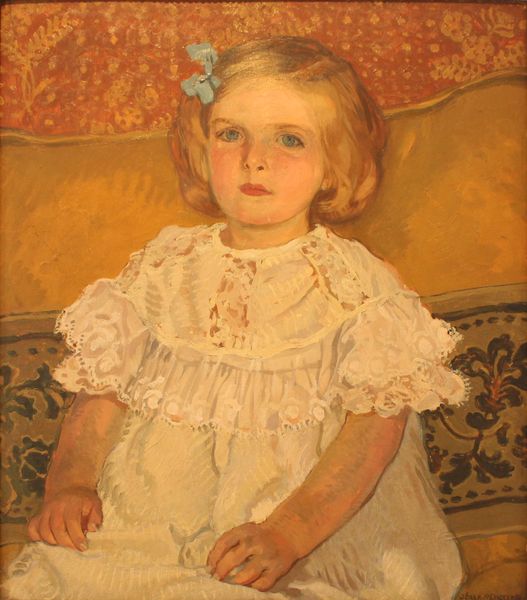
painting, oil-paint
#
portrait
#
painting
#
oil-paint
#
russian-avant-garde
#
academic-art
#
realism
Dimensions: 83 x 115 cm
Copyright: Public domain
Curator: Standing before us is Pavel Filonov's "Portrait of Arman Frantsevich Aziber and his son," painted in 1915. The medium, of course, is oil on canvas. Editor: It's striking, isn't it? Almost unsettling. There's a formality to it, a rigidness in the poses, that hints at something beneath the surface of this bourgeois image. Curator: Yes, that tension is palpable. It was created on the cusp of enormous social and political upheaval. We see this portrait embedded in the turbulent backdrop of pre-revolutionary Russia. Look how Filonov, known for his analytical realism, uses very meticulous brushwork and layering. Editor: Absolutely. The artist seems interested in breaking down forms, building them back up with small strokes of color. It's fascinating. And the materiality of it – the textures he achieves with oil paint are rich and complex. Was this portrait commissioned, I wonder? And how did that impact the artist's creative process and output? Curator: That's a very relevant question. It does straddle this interesting line between being a formal commission and something a bit more… raw. The Azibers would've likely belonged to a privileged class; they were likely patrons of the arts at this moment of massive socio-political change. The contrast between their station and Filonov's own avant-garde, experimental sensibilities is important here. Editor: Thinking about the socio-political situation, it's interesting that we can observe class consciousness subtly undermining the conventions of traditional portraiture here. Curator: Exactly! By disrupting the expected polish of such a portrait, we get a visual representation of that social and cultural churn. He used the portrait’s accepted norms and methods against itself. Editor: A clever twist for a revolutionary period, capturing the complexities of art creation during social change! The son is holding a rose…a very subtle reference or commentary on privilege? Curator: Perhaps. It acts as a silent signifier of class and status. What an intriguing glimpse into a changing society we've observed here today. Editor: I agree! Looking at the artwork's visual cues combined with socio-political circumstances gives an additional layer to one's interpretation and overall feeling when taking it all in.
Comments
No comments
Be the first to comment and join the conversation on the ultimate creative platform.
